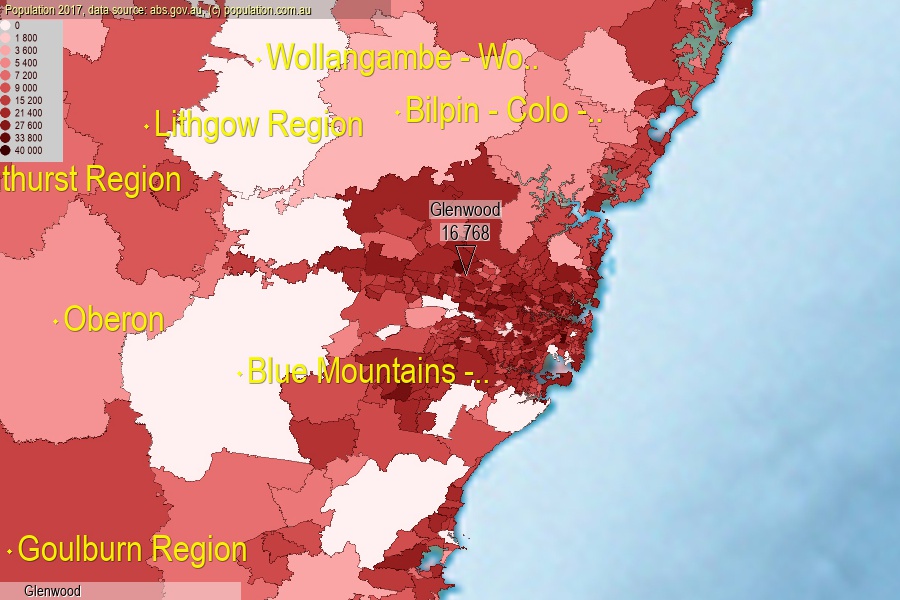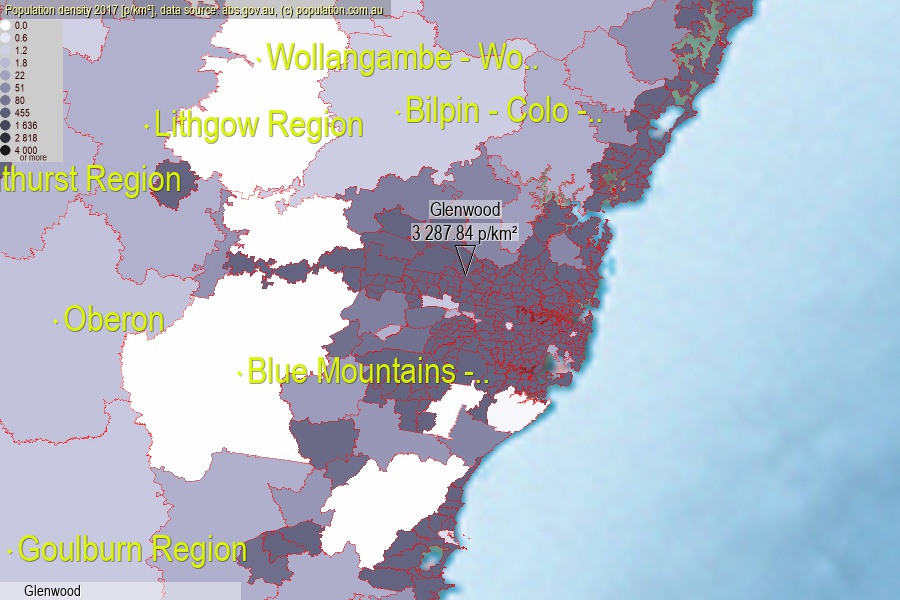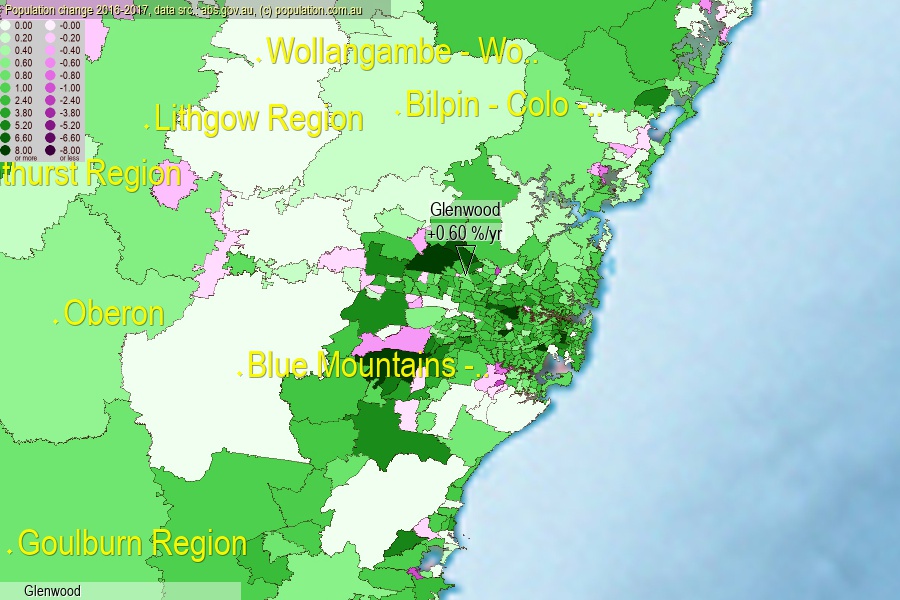 population.com.au
population.com.auLast official estimated population of Glenwood (as Statistical Area Level 2) was 16 768 people (on 2017-06-30)[2]. This was 0.07% of total Australian population and 0.211% of NSW population. Area of Glenwood is 5.10 km², in this year population density was 3 287.84 p/km² . If population growth rate would be same as in period 2016-2017 (+0.6%/yr), Glenwood population in 2025 would be 17 590. [0]



Click to enlarge. Glenwood is located in the center of the images.
Population [people], population density [p./km²] and population change [%/year] [2]
View borders » (new window) [4]
[1991-1992] +19.69 %/Yr.
[1992-1993] +12.52 %/Yr.
[1993-1994] +14.29 %/Yr.
[1994-1995] +30.38 %/Yr.
[1995-1996] +64.88 %/Yr.
[1996-1997] +54.56 %/Yr.
[1997-1998] +53.98 %/Yr.
[1998-1999] +51.39 %/Yr.
[1999-2000] +42.56 %/Yr.
[2000-2001] +25.44 %/Yr.
[2001-2002] +16.58 %/Yr.
[2002-2003] +8.88 %/Yr.
[2003-2004] +7.02 %/Yr.
[2004-2005] +5.32 %/Yr.
[2005-2006] +4.70 %/Yr.
[2006-2007] +3.27 %/Yr.
[2007-2008] +2.87 %/Yr.
[2008-2009] +2.50 %/Yr.
[2009-2010] +1.83 %/Yr.
[2010-2011] +0.61 %/Yr.
[2011-2012] +1.08 %/Yr.
[2012-2013] +0.80 %/Yr.
[2013-2014] +1.05 %/Yr.
[2014-2015] +0.89 %/Yr.
[2015-2016] +0.76 %/Yr.
[2016-2017] +0.60 %/Yr.
[0] Calculated with linear interpolation from officially estimated population
[1] Read more about SA2 and Australian Statistical Geography Standard (ASGS) on abs.gov.au
[2] Population data from Australian Bureau of Statistics (Population and density: 2017; change: 2016-2017)
[3] Digital Boundaries: Australian Statistical Geography Standard (ASGS) 2016.
[4] Border coordinates are simplifyed using Ramer-Douglas-Peucker algorithm.